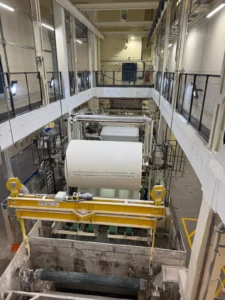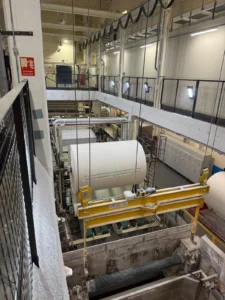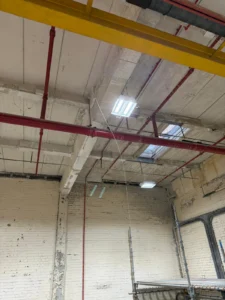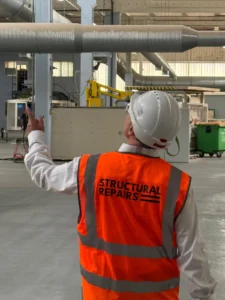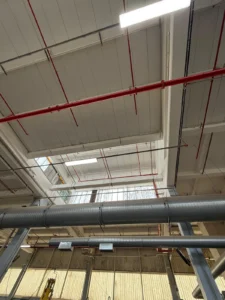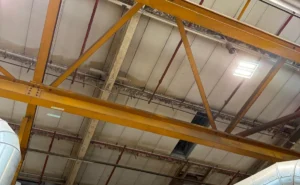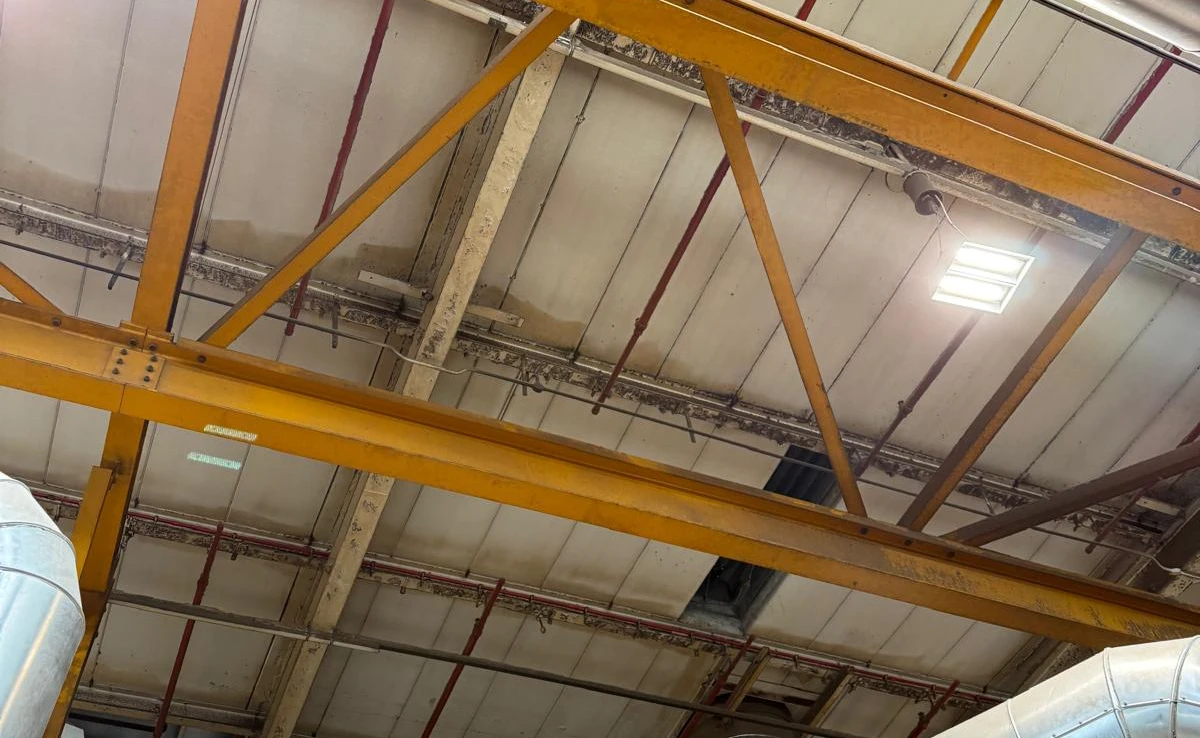
Keep in Moving: Repairs to RAAC Roofing With Minimal Disruption
Reinforced Autoclaved Aerated Concrete (RAAC) is a material that has attracted attention for all the wrong reasons. Once considered an innovative solution for flat roofs in schools, hospitals, and factories, RAAC roofing is now recognised as a material with serious long-term performance and safety issues.
Table of Contents
Why RAAC Roofing Was Popular
Introduced in the post-war period, RAAC appeared to tick all the right boxes for a construction industry under pressure to deliver buildings quickly and economically.
- Lightweight construction – RAAC panels were far lighter than traditional reinforced concrete, reducing the need for heavy structural frames and deep foundations. This made entire projects cheaper.
- Speed of installation – Being precast in factories, RAAC planks could be delivered to site and installed rapidly, helping meet urgent demand for schools, hospitals, and public buildings.
- Thermal efficiency – The aerated structure of RAAC offered better insulation than dense concrete, helping reduce heating costs.
- Cost savings – Because less raw material was used, RAAC was cheaper to produce and transport than conventional concrete.
- Fire resistance – RAAC also provided a reasonable degree of fire safety, which added to its appeal in public sector construction.
In short, RAAC was seen as a modern, economical material ideally suited to the needs of the mid-20th century. RAAC roofing was popular in schools, hospitals and industry, for decades.
The Problems That Emerged
Unfortunately, the properties that made RAAC roofing attractive also created weaknesses that were not fully understood at the time.
- Porous structure – RAAC readily absorbs moisture, which can weaken the material and compromise durability. Because it is both porous and absorbant RAAC roofing is particularly vulnerable to freeze thaw processes and the degradation that ensues.
- Vulnerability of reinforcement – The embedded steel reinforcement is poorly protected compared with traditional concrete. Once rusting sets in, the structural integrity of panels is quickly lost.
- Brittleness – Unlike dense concrete, RAAC lacks toughness. Failures can occur suddenly, without warning signs such as deflection or cracking.
- Limited design life – Many RAAC roofs were installed with a design life of around 30 years. Decades later, these panels are still in use, well beyond their intended service span.
The result is a material that can deteriorate dangerously over time, particularly in roofing applications where exposure to weather increases the risk.
Do You Need to Repair Your RAAC Roofing?
There isn’t currently a single fixed legal deadline in UK law that says all RAAC must be repaired or replaced by a certain date. However, there is a strong legal duty of care on building owners and managers to act promptly once RAAC is identified, because of the risks involved.
Here’s how it works in practice:
- Health & Safety at Work etc. Act 1974
Employers and those in control of premises have a duty to ensure, as far as is reasonably practicable, the health, safety and welfare of staff and others who may be affected. If RAAC is present in a building, allowing people to continue using it without assessment or mitigation could breach this duty. - Management of Health and Safety at Work Regulations 1999
These regulations require risk assessments and prompt action to control identified risks. If RAAC is identified, a risk assessment must be carried out and reasonable steps taken to mitigate danger. - Corporate Manslaughter and Corporate Homicide Act 2007
In extreme cases, if an organisation knowingly fails to address serious structural risks and this leads to a fatality, there could be criminal liability. - Government Guidance (Education & NHS Estates)
While not “law” in itself, government guidance on RAAC in schools and healthcare buildings is very clear: once RAAC is confirmed, immediate mitigation or temporary closure of unsafe spaces is expected. Regulators could take enforcement action if guidance is ignored.
So, while there is no statutory “deadline”, there is a legal imperative to act without undue delay once RAAC is found. Failing to take action could expose duty-holders to enforcement notices, prosecution, liability claims, and reputational damage.
In short: if RAAC is present, the legal obligation is to assess, mitigate and repair as soon as reasonably practicable. Doing nothing is not a defensible option.
Keeping Business Running While Ensuring Safety
Structural repairs are often seen as disruptive, costly, and time-consuming. For many businesses, the fear of shutting down operations during repair work can be just as daunting as the structural issue itself. At Structural Repairs, we challenge that assumption. With careful planning and advanced techniques, even major works can be delivered with minimal disruption—keeping facilities safe while production continues as normal.
Case Study: Tackling RAAC in a Toilet Roll Factory
RAAC (Reinforced Autoclaved Aerated Concrete) has been a growing concern across the UK, in one recent case, a toilet roll factory discovered significant RAAC problems in its roof.
Ordinarily, this might have meant lengthly closures, temporary relocation of operations, and substantial costs. But our tailored repair plan ensured the roof can be reinforced without interrupting production. The factory can continue operating at full capacity while the structural risks were addressed safely and effectively.
As Roger Line of Structural Repairs says:
“Repairs don’t have to stop your business. With the right expertise, work can happen above your head while production continues below.”
Why Minimal Disruption Matters
For industrial facilities, the cost of downtime often far exceeds the cost of the repair itself. Shutting down a paper mill, food processing line, or logistics hub can mean:
- Lost revenue
- Missed delivery deadlines
- Supply chain disruption
- Risk to customer relationships
- Idle staff and wasted resources
Minimal disruption solutions eliminate these risks. Owners and managers retain peace of mind, while consulting engineers can confidently present Structural Repairs as a partner offering practical, commercially sensitive solutions.
Engineers as Partners
We work closely with engineering firms who want to extend their service offering. By collaborating with Structural Repairs, engineers can bring clients solutions that strengthen structures while protecting operations.
Techniques That Keep Facilities Running
The methods we employ are designed around each site’s specific needs. Common approaches include:
- In-situ strengthening – reinforcing RAAC roofing panels or other vulnerable elements with composites, steel sections or sprayed systems.
- Phased access – dividing works into zones so that operations continue safely in unaffected areas.
- Low-noise and low-dust techniques – essential in food production or hygiene-sensitive industries.
- Temporary supports – providing immediate safety while long-term strengthening is installed.
Every repair plan is bespoke, balancing structural integrity with operational continuity.
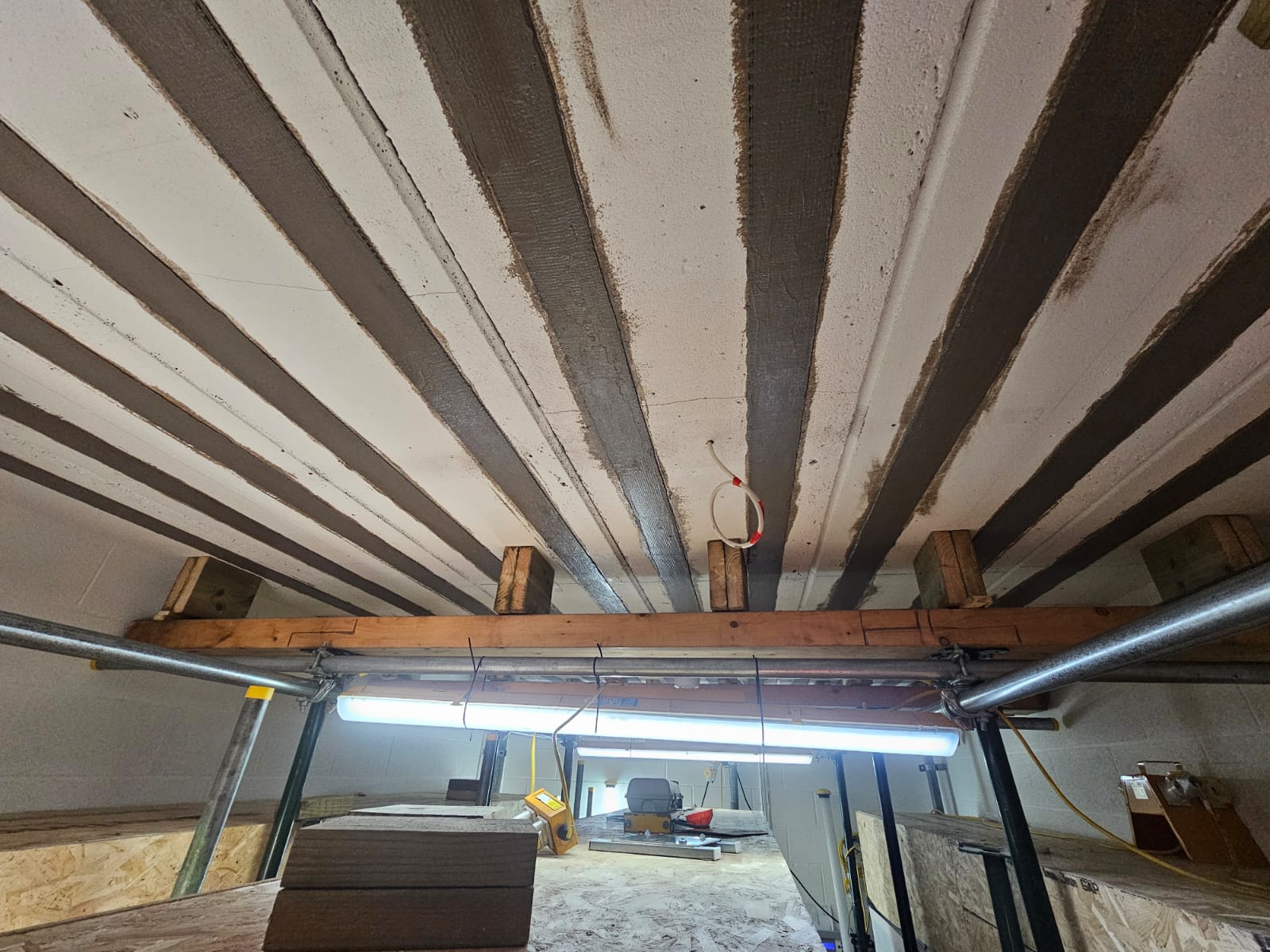
Benefits for Owners and Managers
Choosing repair over replacement brings significant advantages:
- Safety first – risks from degraded structures such as RAAC are properly eliminated.
- No costly downtime – production continues without disruption.
- Cost efficiency – avoiding demolition and rebuild saves substantial capital costs.
- Stronger outcomes – modern repair techniques often leave structures more durable than when originally built.
An Environmental Advantage
Repair is also the sustainable choice. Concrete production is one of the world’s largest sources of CO₂ emissions. By repairing instead of replacing, enormous quantities of carbon are saved while valuable water and energy resources are conserved. For companies working towards net zero, this makes structural repair a key part of their sustainability strategy.
“Repairing avoids thousands of tonnes of CO₂ emissions – good for your business and good for the planet.”
Roger Line, Structural Repairs
Conclusion: Stronger Structures, Ongoing Operations
The toilet roll factory case study is a powerful reminder that major structural issues do not have to mean shutting down operations. With the right expertise, facilities can stay open, safe and productive while repairs are delivered in the background.
For engineering firms, partnering with Structural Repairs means offering clients an added level of confidence: repairs that strengthen without stopping. For owners and managers, it means protecting people, property, and productivity at the same time.
Talk to Structural Repairs
If your facility is facing challenges with RAAC, concrete deterioration or other structural issues, talk to us today. We’ll design a bespoke solution that keeps your business running while ensuring the safety and strength of your building.
Contact Structural Repairs now to discuss your project – initial consultations are FREE.
